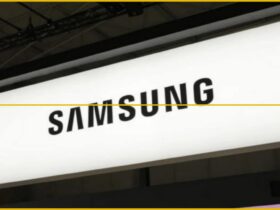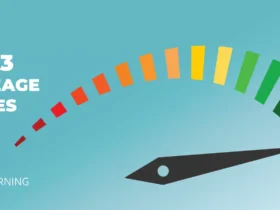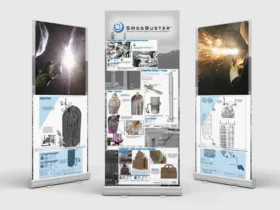In today’s world, the conversation around sustainability has become increasingly important, not just for large corporations but also for small businesses. Beyond being a trendy buzzword, sustainability in electricity usage has emerged as a vital aspect of modern business. Small businesses are realizing that adopting a sustainable approach not only aligns with environmental responsibility but can also lead to long-term cost savings and an enhanced brand image. While seeking cheap gas and electricity for small businesses is undoubtedly beneficial, there are numerous positive side effects that come with sustainable electricity practices. In this article, we will explore practical tips and considerations to help small businesses embrace a sustainable approach to their electricity consumption.
1. Energy Audit: Charting Your Course
Before embarking on a journey towards sustainable electricity usage, it’s crucial to understand your current position. An energy audit serves as the map that shows your current location and potential routes for improvement. Just as you review your household bills, a business energy audit involves a careful examination of energy usage patterns. For example, if you operate a small bakery, you might discover that ovens and refrigerators are the primary electricity consumers. This knowledge serves as a foundation for your sustainability efforts.
2. Set Clear Sustainability Goals: Defining Your Destination
Imagine going on a road trip without a specific destination in mind. It feels aimless, doesn’t it? This is why setting clear sustainability goals for your business is essential. These goals act as your destination on your sustainability journey, making your efforts measurable and guiding your actions. For instance, you could aim to reduce your electricity consumption by 20% over the next year. Just like knowing you want to reach a particular city on your road trip, these goals provide direction and purpose to your sustainability initiatives.
3. Embrace Renewable Energy Sources: Clean Fuel for Your Business
Renewable energy is the cleanest fuel you can use for your business. Consider a restaurant that installs solar panels on its roof to generate electricity from the sun. Solar power generates electricity without producing harmful emissions, making it a sustainable and environmentally friendly option. Additionally, you can explore renewable energy credits, which are like eco-friendly certificates. When you purchase these credits, you are essentially contributing to the positive environmental impact of a green energy producer, offsetting your own electricity usage.
4. Invest in Energy-Efficient Technologies: Superheroes of Electricity Savings
Think of energy-efficient technologies as the superheroes of electricity savings. Replacing old, energy-guzzling light bulbs with modern LED lights is one such example. LED lights consume less electricity while providing the same amount of light, akin to upgrading your vehicle to one that covers the same distance with less fuel. Similarly, Energy Star-rated appliances are energy champions, utilizing advanced technology to reduce electricity consumption.
5. Implement Smart Energy Management Systems: Your Wizard for Savings
Smart energy management systems are akin to having a wizard at your disposal. These systems, equipped with advanced technology, monitor your electricity usage in real-time. When they detect wasteful habits or areas for improvement, they can automatically adjust, effectively reducing your energy consumption without requiring your intervention.
6. Educate and Involve Your Team: Building Sustainability as a Team Effort
Your employees are valuable teammates on this sustainability journey. Imagine playing a soccer match with everyone chasing the ball but no one guarding the goal. That’s why educating your team about the importance of saving electricity is crucial. Encourage them to develop energy-efficient ideas, such as turning off lights in empty rooms or using natural light instead of artificial lighting during the day. Rewarding them for their energy-saving efforts is like scoring a goal in your sustainability game.
7. Regular Maintenance and Upkeep: Keeping Your Equipment in Top Shape
Think of your energy-efficient equipment as loyal pets. Just like pets require regular care, your equipment needs maintenance. Clean filters, fix leaks, and perform routine check-ups. This way, your appliances will remain in optimal condition, using electricity as efficiently as possible and extending their lifespan.
8. Monitor, Measure, and Adjust: Baking the Perfect Sustainability Cake
Imagine trying to bake the perfect cake. You wouldn’t simply throw ingredients into the oven and hope for the best. You’d check the cake’s progress, adjust the temperature if needed, and closely monitor it. Sustainability is quite similar. Continuously monitor your electricity consumption, much like watching that cake. Measure your progress toward your sustainability goals and adjust your strategies accordingly. If you notice your electricity use creeping up, make changes to bring it back down, just as you would lower the oven temperature if your cake were browning too quickly.
9. Energy-Efficient Employee Habits: Small Actions, Significant Impact
Consider the impact of small, everyday actions on your electricity bill, much like how a drop of water can fill a bucket over time. Encourage your employees to develop energy-efficient habits, such as turning off lights when leaving a room, shutting down computers and devices when not in use, and setting thermostats to energy-saving settings. These seemingly minor changes can accumulate significant energy savings, reducing your overall consumption without major investments in technology or infrastructure. It’s like turning off the tap when brushing your teeth; it may seem inconsequential, but it substantially reduces water usage over time.
Conclusion: Navigating Toward a Sustainable Future
Adopting a sustainable approach to business electricity isn’t just about being eco-friendly; it’s also about saving money and improving your business’s reputation. Small businesses can effectively cut costs and reduce their environmental impact by conducting energy audits, setting clear sustainability goals, embracing renewable energy sources, and investing in energy-efficient technologies. Engaging your team, prioritizing maintenance, and regularly monitoring your progress are key components of a successful sustainability strategy. These practical tips and considerations empower small businesses to steer toward a greener and more financially sound future, benefiting both the planet and their bottom line.







